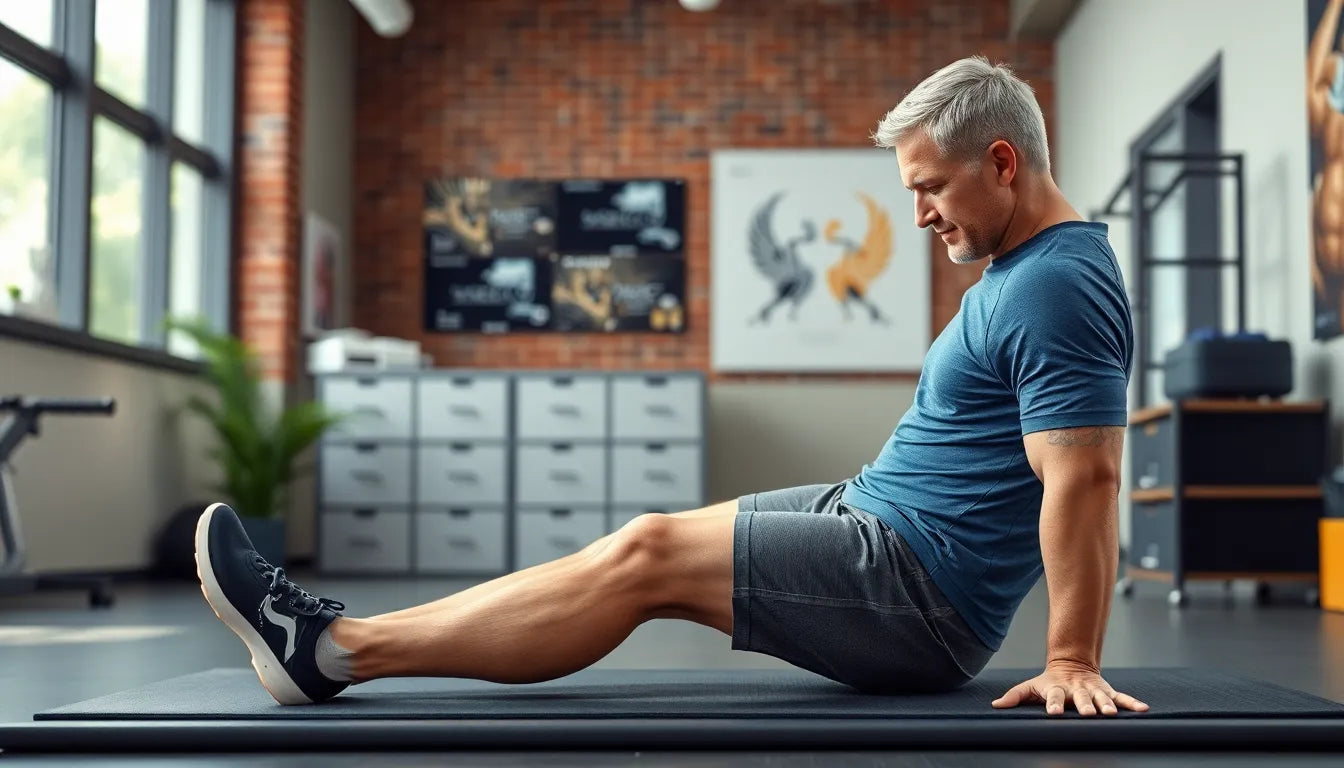In today's digital age, many of us spend countless hours in front of a computer, often leading to a condition known as mouse arm, or "musearm." This repetitive strain injury (RSI) is a result of prolonged computer use, particularly when the arm and wrist are positioned unnaturally. The symptoms are all too familiar: pain, stiffness, tingling, and numbness that can affect the hand, wrist, forearm, shoulder, or neck. If left unaddressed, these symptoms can escalate into more serious issues such as tendonitis or carpal tunnel syndrome.
Understanding the impact of mouse arm
Mouse arm is not just an inconvenience; it's a condition that can significantly impact your daily life and productivity. The repetitive and static muscle work involved in using a computer mouse can lead to muscle overload, tendon irritation, and even nerve compression. These factors contribute to the discomfort and pain associated with this condition. It's crucial to recognize these symptoms early and take proactive steps to mitigate them. By addressing the issue at its onset, you can prevent long-term damage and maintain your quality of life.

Men's Posture Shirt™ - Black
Patented shirt activates muscles, improves posture, and helps relieve pain during daily work.
The benefits of stretching exercises
One of the most effective ways to combat mouse arm is through regular stretching exercises. Stretching plays a pivotal role in relieving tension, improving flexibility, and preventing muscle overload. By incorporating stretching into your daily routine, you can experience both immediate relief and long-term prevention of symptoms. Stretching increases blood flow to the affected areas, reducing muscle tension and promoting healing. This dual benefit makes stretching an essential part of managing and preventing mouse arm.
Whether you're experiencing early signs of mouse arm or looking to prevent it altogether, integrating stretching exercises into your routine is a wise move. These exercises are simple, require no special equipment, and can be performed anywhere, making them an accessible solution for anyone dealing with the demands of modern computer work.
scientific insights into stretching for mouse arm relief
The effectiveness of stretching exercises in alleviating symptoms of mouse arm is well-documented in scientific literature. Research indicates that regular stretching can significantly reduce the discomfort associated with repetitive strain injuries by enhancing blood circulation and reducing muscle tension. This increase in blood flow delivers essential nutrients and oxygen to the muscles, which aids in recovery and reduces inflammation. Moreover, stretching promotes the release of tension that accumulates from prolonged static postures, helping to alleviate pain and improve overall muscle function.
Studies have shown that incorporating stretching into a daily routine can lead to a noticeable decrease in the severity of symptoms such as pain, stiffness, and tingling. This is because stretching helps maintain muscle elasticity and joint flexibility, which are crucial for preventing muscle overload and tendon irritation. By keeping the muscles and tendons supple, stretching exercises can prevent the progression of symptoms and reduce the risk of developing more severe conditions like carpal tunnel syndrome.
effective stretching exercises for mouse arm
To effectively combat the symptoms of mouse arm, consider integrating the following stretching exercises into your daily routine. These exercises are specifically designed to target areas commonly affected by repetitive computer use, providing relief and promoting long-term muscle health.
underarm stretch
Begin by extending one arm horizontally in front of you. Flex your wrist upwards or downwards, using your opposite hand to gently hold the stretch. Maintain this position for 20 seconds and repeat multiple times throughout the day. This exercise helps alleviate tension in the forearm and wrist.
"tip money" stretch
Position your arm so that your palm faces upward and your fingers point outward. While maintaining this position, look over your shoulder at your palm. This stretch is designed to release tension in the forearm muscles, which are often overworked during computer use.
"smoke break" stretch
Imagine holding an invisible cigarette and bring it towards your mouth with your little finger facing your cheek. Extend your arm sideways and bend your wrist downwards. This stretch focuses on the dorsal forearm, providing relief from tension and discomfort.
wrist stretch
Grasp your thumb with your opposite hand and gently stretch your forearm while tilting your wrist up or down. Hold this position for 10-30 seconds. This exercise is particularly effective in relieving tension in the wrist and forearm.
hands up in the air
Raise both arms overhead to stretch your shoulders and arms. This simple movement helps to counteract the effects of prolonged sitting and computer use, promoting better posture and reducing strain on the upper body.
rotate wrist
Perform gentle wrist rotations to enhance flexibility and relieve tension. This exercise can be done at your desk and is an excellent way to maintain wrist health and prevent stiffness.
arm circles
Rotate your arms in circular motions to loosen the muscles in your shoulders, neck, and upper arms. This dynamic stretch helps improve circulation and reduces the risk of muscle fatigue.
Incorporating these stretches into your daily routine can make a significant difference in managing mouse arm symptoms. Remember to perform these exercises regularly, especially during breaks from computer work, to ensure maximum benefit. By doing so, you can maintain muscle health, prevent further strain, and improve your overall well-being.
preventive strategies and ergonomic tips for mouse arm
Preventing mouse arm requires more than just stretching exercises; a holistic approach that includes proper ergonomics is essential. Maintaining an ergonomic workstation can significantly reduce the strain on your muscles and joints, minimizing the risk of developing repetitive strain injuries. Here are some practical tips to help you set up an ergonomic workspace:
- Adjust your chair height: Ensure your feet are flat on the floor and your knees are at a 90-degree angle. This position helps maintain a neutral spine posture.
- Position your monitor: Place your monitor at eye level and about an arm's length away to reduce neck strain.
- Use ergonomic accessories: Consider using an ergonomic keyboard and mouse to promote a more natural hand position. These tools can help alleviate pressure on the wrists and forearms.
- Take regular breaks: Stand up and move around every 30 to 60 minutes to prevent muscle stiffness and improve circulation.
- Practice good posture: Sit up straight with your shoulders relaxed and your back supported by the chair. Avoid slouching or leaning forward.
By incorporating these ergonomic principles into your daily routine, you can create a more comfortable and supportive environment that helps prevent mouse arm and enhances overall productivity.

Lumbar support belt
Adjustable belt for lumbar support and relief; ideal for daily use if you sit or stand long hours.
additional resources and recommendations
To maximize the benefits of stretching exercises and ergonomic practices, consider integrating them into your daily routine consistently. Regular practice can lead to significant improvements in muscle flexibility and overall comfort. Additionally, if you find that your symptoms persist despite these efforts, it may be beneficial to consult with a healthcare professional. They can provide a comprehensive evaluation and tailor a treatment plan to your specific needs.
For those looking to further explore ergonomic solutions, investing in products such as adjustable desks, supportive chairs, and specially designed ergonomic tools can be valuable. These products are designed to enhance your comfort and reduce the risk of strain during prolonged computer use.
frequently asked questions
how often should I do these exercises?
Aim to perform these stretches at least twice a day, especially during breaks from computer work, to maintain muscle health and flexibility.
can these exercises prevent mouse arm entirely?
While they significantly reduce the risk, maintaining an ergonomic workstation and taking regular breaks are also crucial components of prevention.
what should I do if the pain persists despite stretching?
Consult a healthcare professional for a comprehensive evaluation and personalized treatment plan to address persistent symptoms.
are there any specific ergonomic products that can help?
Ergonomic aids like supportive chairs, adjustable desks, and specially designed keyboards/mice can be beneficial in reducing strain.
can I do these exercises if I already have carpal tunnel syndrome?
Yes, but proceed with caution and consult with a healthcare provider to ensure these stretches are suitable for your condition.
Incorporating these strategies and exercises into your routine can greatly improve your comfort and productivity while reducing the risk of developing mouse arm. By taking proactive steps and making ergonomic adjustments, you can protect yourself from the discomfort associated with repetitive strain injuries.


















